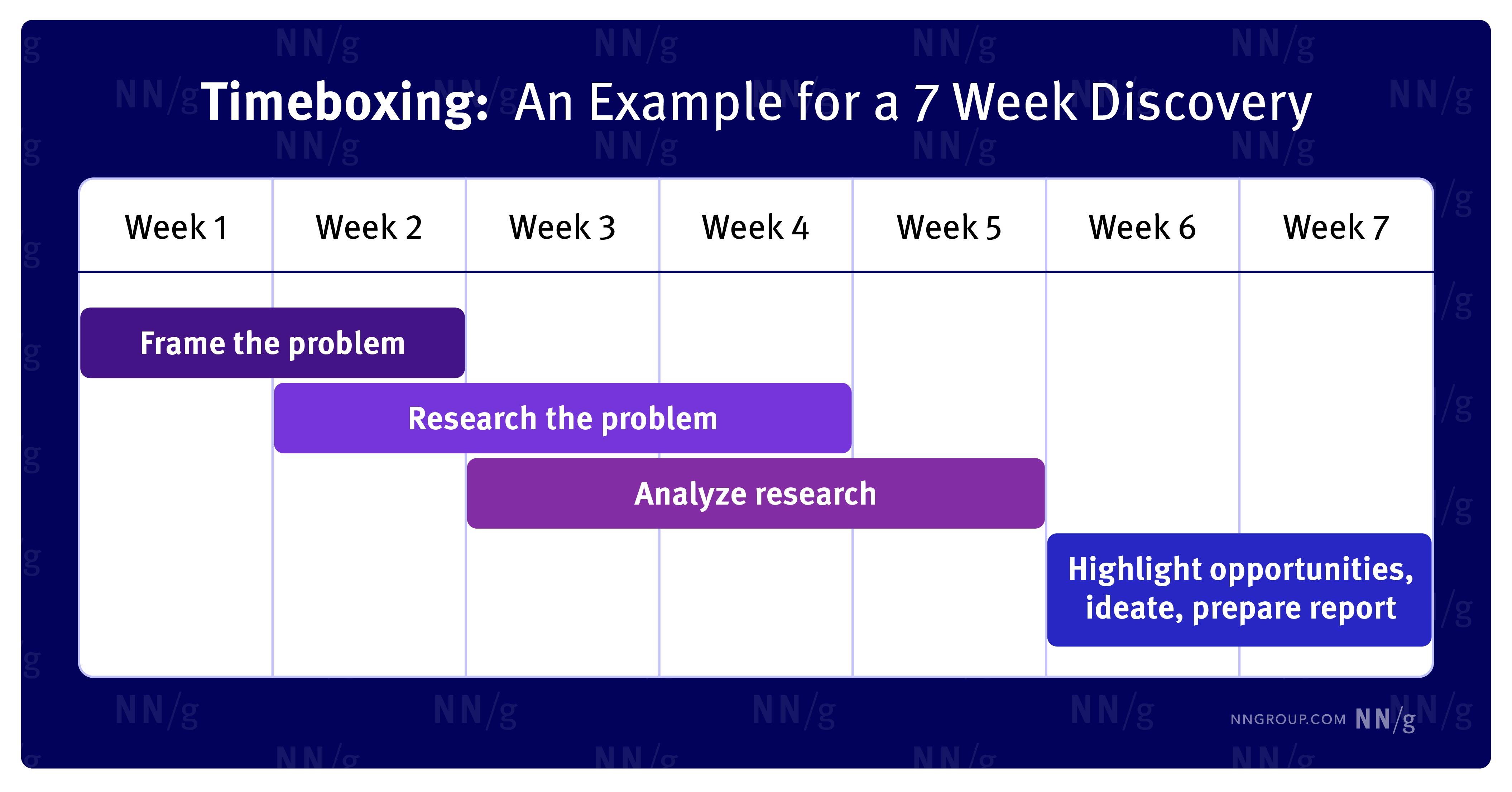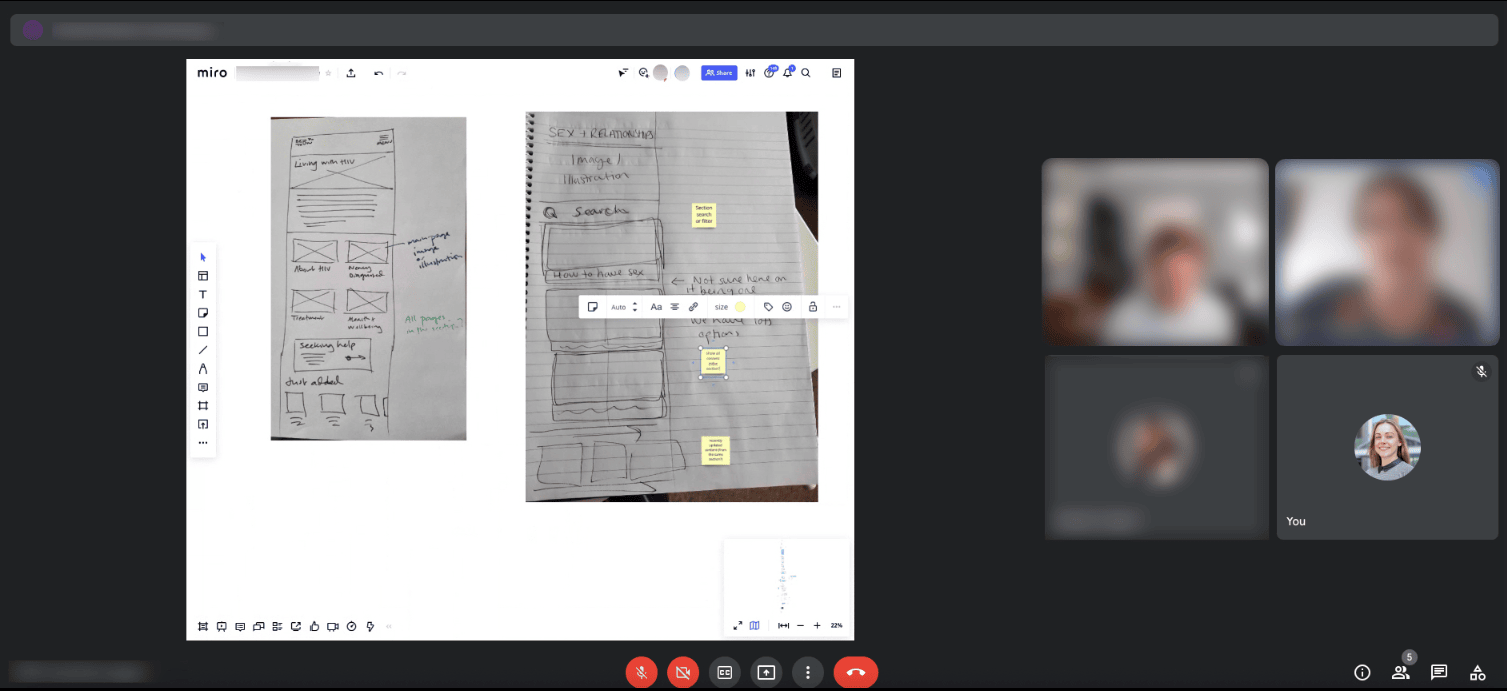Summary:
Discovery is challenging; it can be hard to know what to research, how to do discovery as a team, and how to get buy-in. Follow these 7 tips for smoother discovery efforts.
Discovery is one of the most challenging parts of the design process because it’s filled with unknowns. The problem you want to solve is perhaps undefined, and many unknowns exist about who the users are and what they need. Team members may disagree on what they should explore. Additionally, there may be pressure to skip discovery and make a quick decision on what to build.
I’ll share 7 tips for running discovery efforts that ensure its success, build team morale, and ensure time is used wisely.
1. Secure Buy-in Before You Start
Before starting a discovery effort, team members and important stakeholders should understand what discovery is and why we do it. Without buy-in, discoveries can be cut short, not performed collaboratively or properly, or key stakeholders may not support the discovery outcome.
If your team or stakeholders are new to the concept of discovery, you may need to educate them on what discovery is and isn’t. For example, many teams assume discovery is about exploring or testing solution ideas rather than learning about the problem to solve.
If team members are tied to exploring specific solutions, run a workshop to identify whether there are any important unknowns or big assumptions that could mean pursuing these solutions would be risky.
2. Agree on Roles and Norms
Discovery is a collaborative effort. Team members often need to work together closely to research the problem space. Establishing roles and norms as early as possible (such as in a kick-off workshop) sets teams up for success and can boost team morale.
In newly formed teams or teams with atypical roles, each member’s role can often be ambiguous. To avoid unproductive disagreements, identify which discovery tasks, research, or unknowns should be owned by whom.
Additionally, agree on how you’ll work together (often called group norms). For example, you may want to decide on when you’ll meet, how you’ll share what you’re learning, and how team members will be involved in user research. An example norm might state that the group expects each team member to attend one user research session weekly.
3. Frame the Problem
Some teams start research without framing the challenge, problem, or opportunity. This can result in teams researching the wrong things.
To avoid wasting time in your discovery, frame the problem you want to explore and eventually solve it by constructing a problem statement.
A problem statement concisely describes the problem, who it affects, and why it’s essential to solve it.
A problem statement can ensure everyone is on the same page about the discovery’s scope when created collaboratively. When constructing a problem statement, avoid suggesting a solution so the team doesn’t anchor on a solution too early.
4. Prioritize Your Unknowns
To ensure discovery research is productive, identify what you don’t know about your users or the problem space.
Sometimes, when teams brainstorm their “unknowns,” they identify too many! To make the list of unknowns manageable, first cluster any similar unknowns. Next, see if you can create broader categories of unknowns to encompass more granular ones.
For example, the four unknowns in the first column of the table below could be collapsed under the broader unknown: Users’ device use and contact preferences.
| Granular unknowns | Broad, encompassing unknown |
|---|---|
|
Users’ device use and contact preferences |
After generating a list of broader unknowns, consider voting on which unknowns are the most important to establish a prioritized list.
Ask:
- Which things would be most important to learn to help solve the problem?
- Which unknowns are risky because there would be large consequences if we made an incorrect assumption about them?
5. Timebox Your Discovery
If your team does not have a natural time limit (such as a sprint), creating one can give your team a sense of urgency and focus.
Timeboxing refers to setting a time limit on specific project phases or tasks.
Most discoveries are short, so use your time wisely. It’s common for teams in the discovery stage to experience the planning fallacy.
The planning fallacy refers to the tendency of people to underestimate how long tasks take. When this occurs, teams are left scrambling to cram in research before a deadline.
Timeboxing can be done in many ways; for example, you can time-box specific activities (such as interviews) or phases (such as problem definition, research, or analysis).

6. Involve the Team in User Research
It can be tempting to do user research alone and report what you’ve found to the team. Although this approach may seem efficient, it can result in team members forming incorrect assumptions about users, impacting your ability to achieve consensus on which problems are important and how best to solve them.
When team members are involved in user research, they develop first-hand knowledge of users’ needs, pain points, and backgrounds. They remember specific stories and instances and develop empathy for their users — something difficult to do from a report, notes, or a secondary account.
7. Analyze, Synthesize, and Ideate Together
Analyzing, synthesizing, and ideating as a team can provide better insights and more creative solution ideas.
During or after each research session, encourage team members to note their top observations. As a group, cluster the notes from multiple sessions to look for patterns and emerging themes.
Agree with your team on how you’ll synthesize data and insights from various sources (such as user research, business analysis, or tech exploration) to create a shared understanding. For example, some teams map what they are learning or have found (for example, through a service blueprint or a business model canvas).
After analyzing and synthesizing your data, construct How-Might-We questions to frame ideation on the things you uncovered in your discovery.
For example, if you found that users often want to speak to someone for reassurance, you could craft a How-Might-We question like, “How might we provide the reassurance users need?” Using this as a prompt, encourage team members to spend time alone generating ideas before converging as a group to review them.

Conclusion
Discovery is one of the most complex parts of the design process: exploratory research can be hard to do and analyze, and discoveries are often fraught with collaborative challenges. For better discoveries, secure buy-in early, ensure a shared understanding of the problem and roles, and work together as a team on research, analysis, and ideation.
